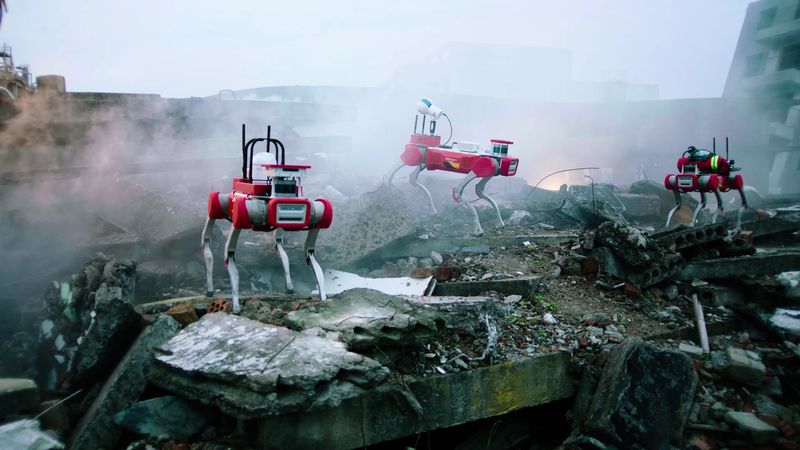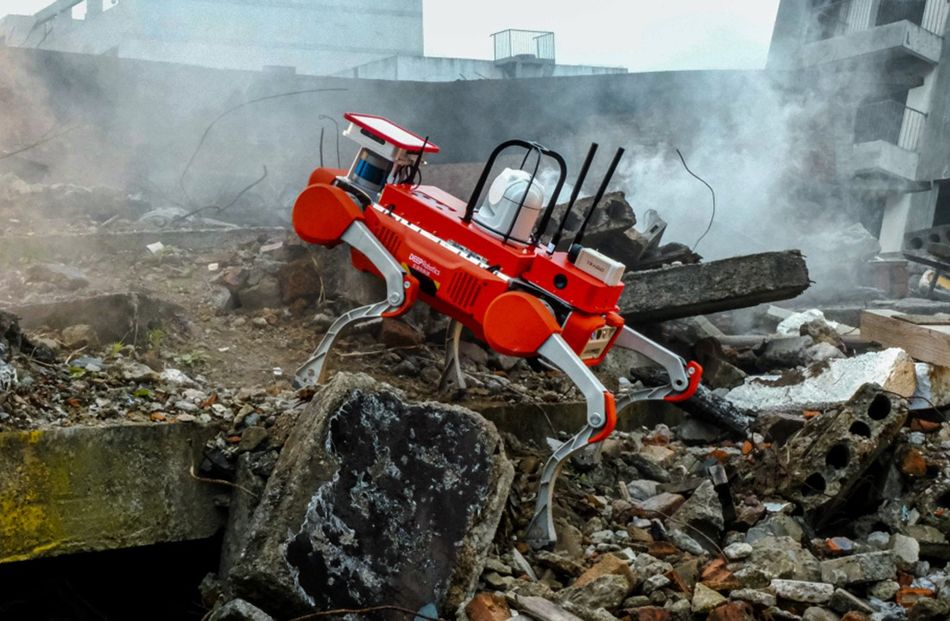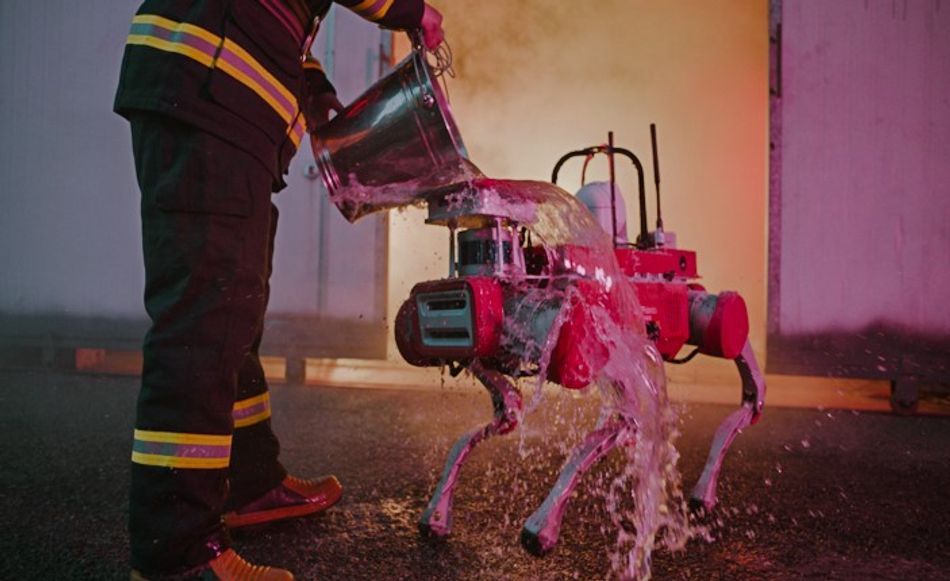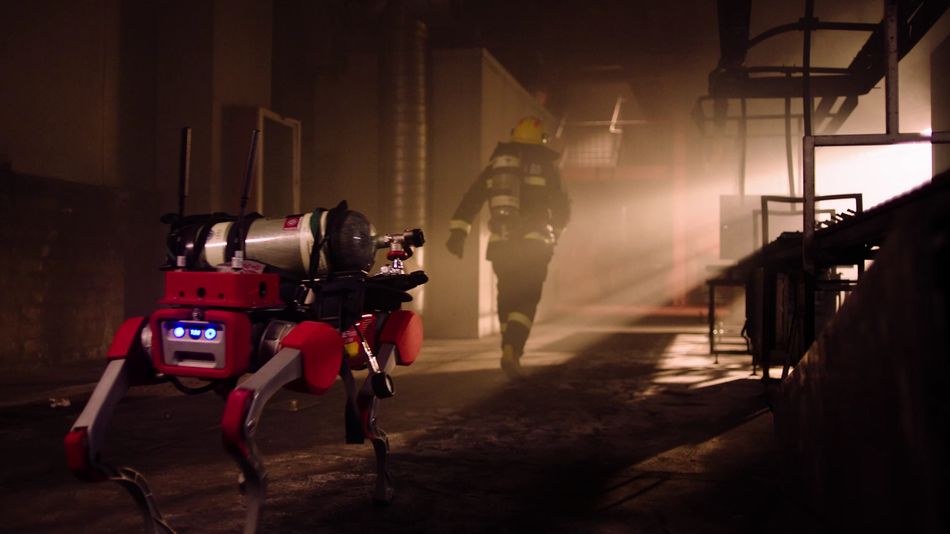Jueying X20 Robot Dog Hazard Detection Rescue Solution
With the flexibility to deliver unmanned detection and rescue services, Jueying X20 is designed for the complex terrain of a post-earthquake landscape, the insides of vulnerable debris buildings, tunnel traffic accidents, and in toxic, hypoxia, and high-density smoke environments created by chemical pollution or disaster event.

Jueying X20 can complete unmanned detection and rescue tasks in harsh conditions
Jueying X20 can go into high-risk areas post-disaster, both outdoor and indoor,s where it can traverse over ruins, piles of rubble, stairwells, and other unstructured pathways. It can easily step over 20cm (7.9 inches) high obstacles and climb on a 35-degree slope. The ability to move freely in all directions and manoeuvre within a small contact area reduces the chances of secondary accidents.
The IP66 industrial-grade protection ensures the four-legged robot can complete detection tasks in extreme weather conditions, including heavy rain, sand and dust storms, low temperatures and hail.
The maximum payload of 85kg allows the robot dog to carry oxygen bottles and other rescue supplies to disaster sites, assisting the stranded victims and rescuers.
By integrating a wide range of application modules, including a long-distance communication system, a bi-spectrum PTZ camera, gas sensing equipment, an omnidirectional camera, and a pickup, the robotic solution includes long-distance control and images transmission, heat source tracking, real-time detection of harmful gases and rescue calls, among other functions. Moreover, Jueying X20 is available with an optional rotating laser scanner, which can obtain high-precision point cloud data from indoor and outdoor disaster and accident sites, providing vital information for post-disaster data analysis.


